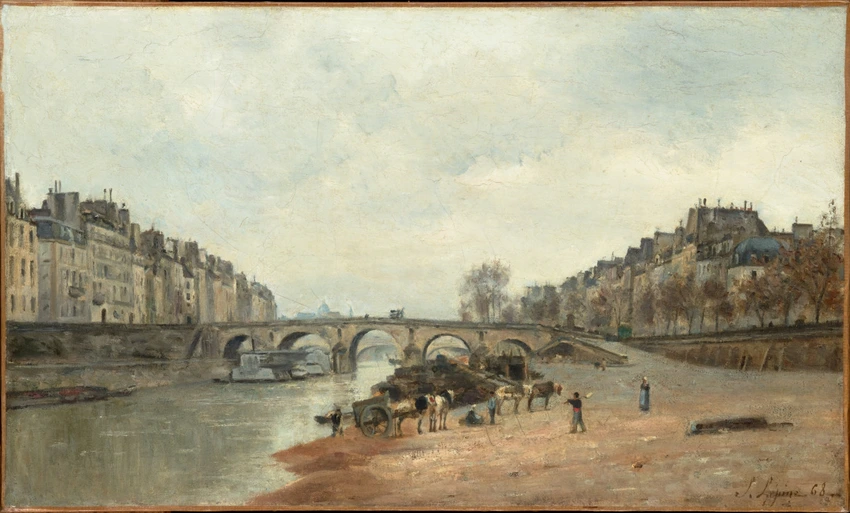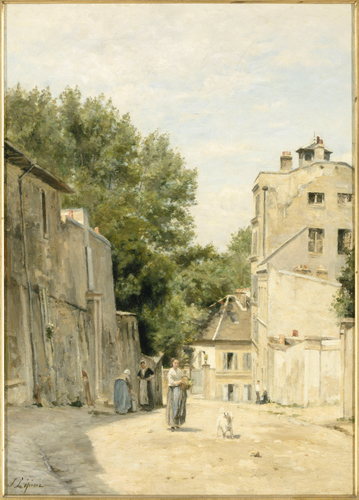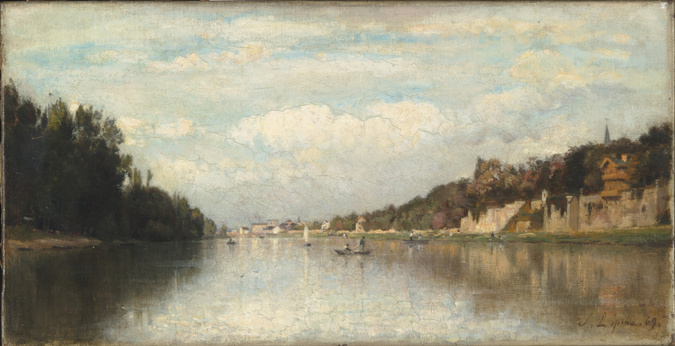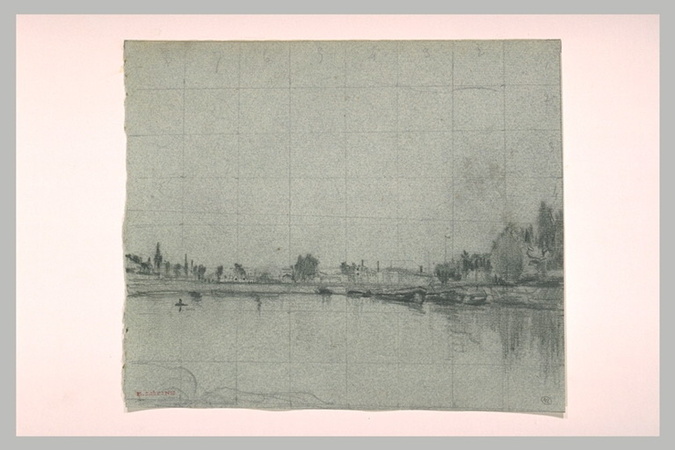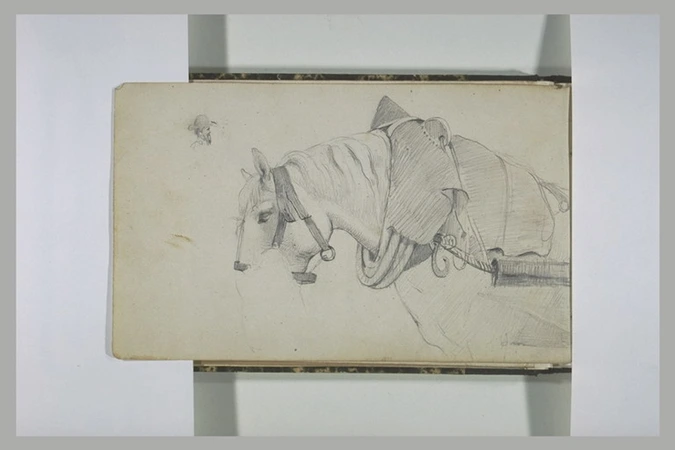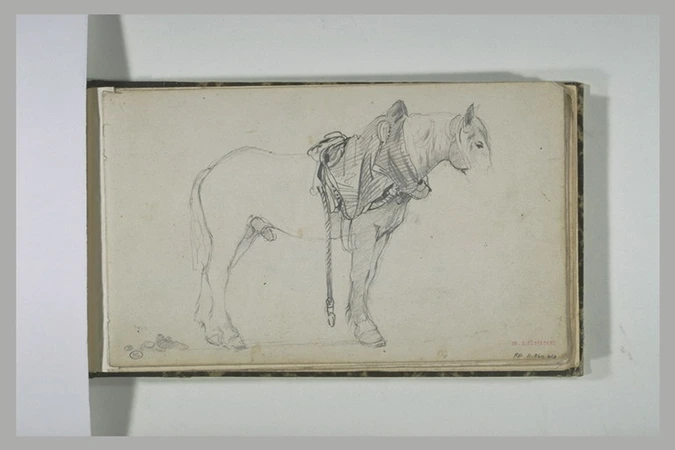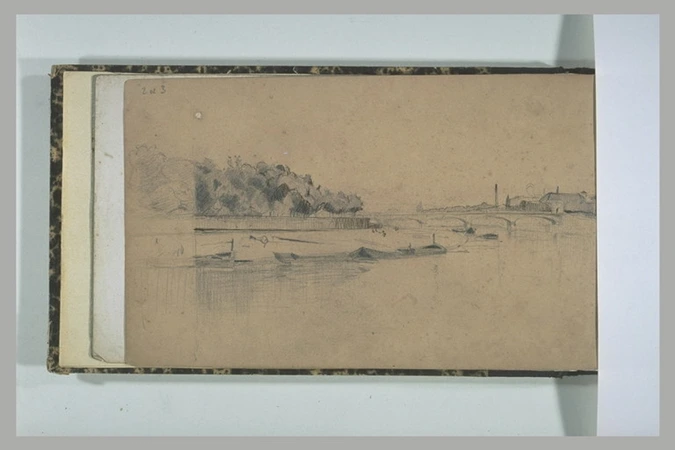Quais des Célestins, avec le pont Marie
Stanislas Lépine painted many views of Paris in which the Seine and the surrounding area feature prominently. These urban landscapes mostly fall into two principal formats. For the first, the artist would place his easel on the riverbank and paint a frontal view of the opposite bank. For the second, as here, he would set himself up in the middle of the motif and look towards the horizon. The decoration would consequently be laid out along diagonals defining the space.
In this view of the Quai des Célestins, these diagonals are formed, on the left, by the Seine placed very low, and on the right, by the row of trees planted on the embankment. The buildings above again reinforce the impression of moving forward to a vanishing point. These lines draw the eye towards the arches of the Pont Marie, one of the most ancient bridges in Paris.
The right half of the foreground is mainly open. Here, Lépine put in a scene of everyday life in Paris, as Daumier might have done before him, and Monet or Sisley after him. A dark mound can be seen on the bank. This is certainly coal being collected in carts. Depicting this commercial activity enabled the painter to animate the scene with people at work. He used a limited number of colours. Lépine preferred discreet tones and glazes, with a fluid, almost transparent use of paint, which modified the colours beneath. These characteristics place the painting in the tradition of Camille Corot's poetic evocations, but transplanted into a contemporary, urban setting. With his light palette and very delicate tones of grey, Lépine is another of the artists who opened the way for Impressionist landscapes.
